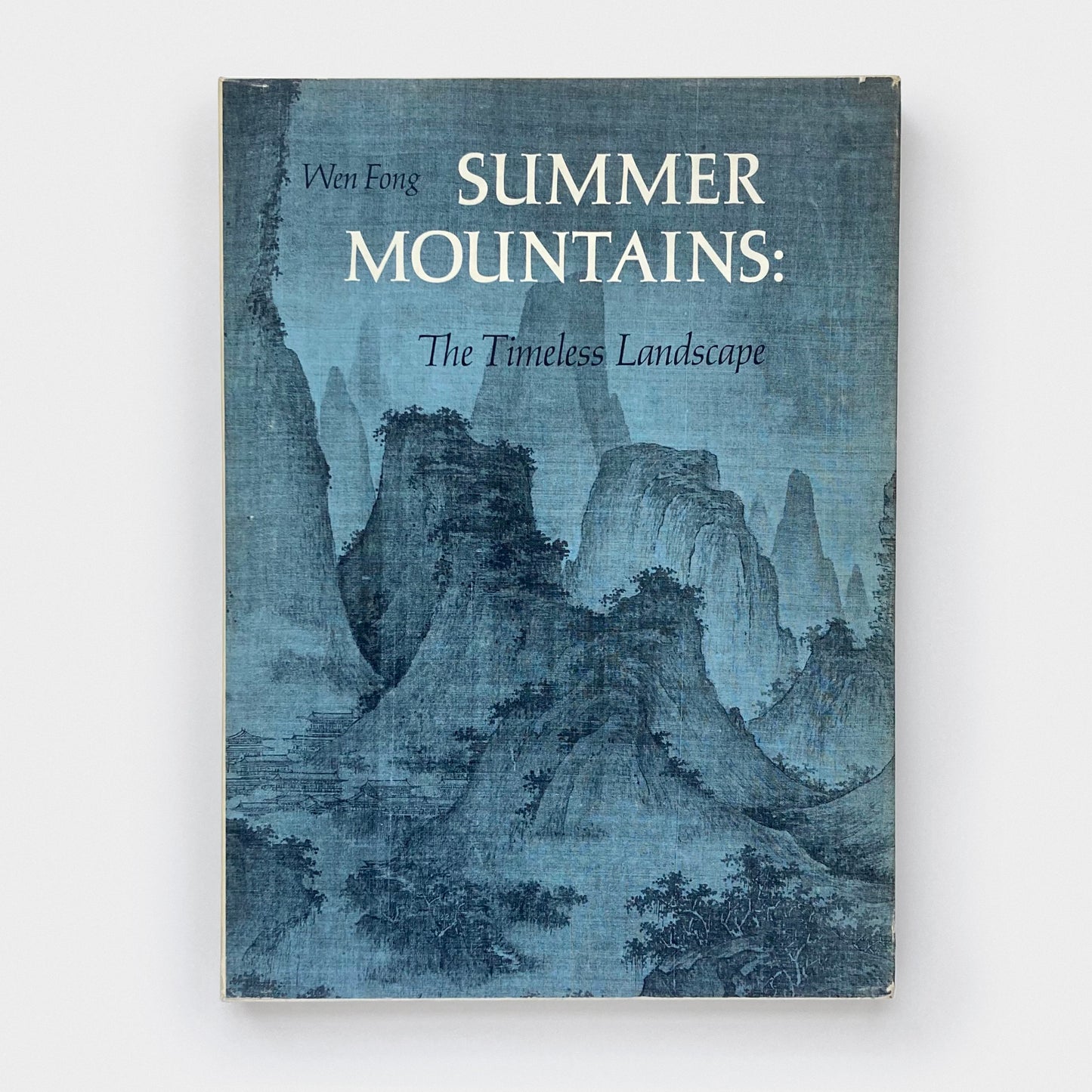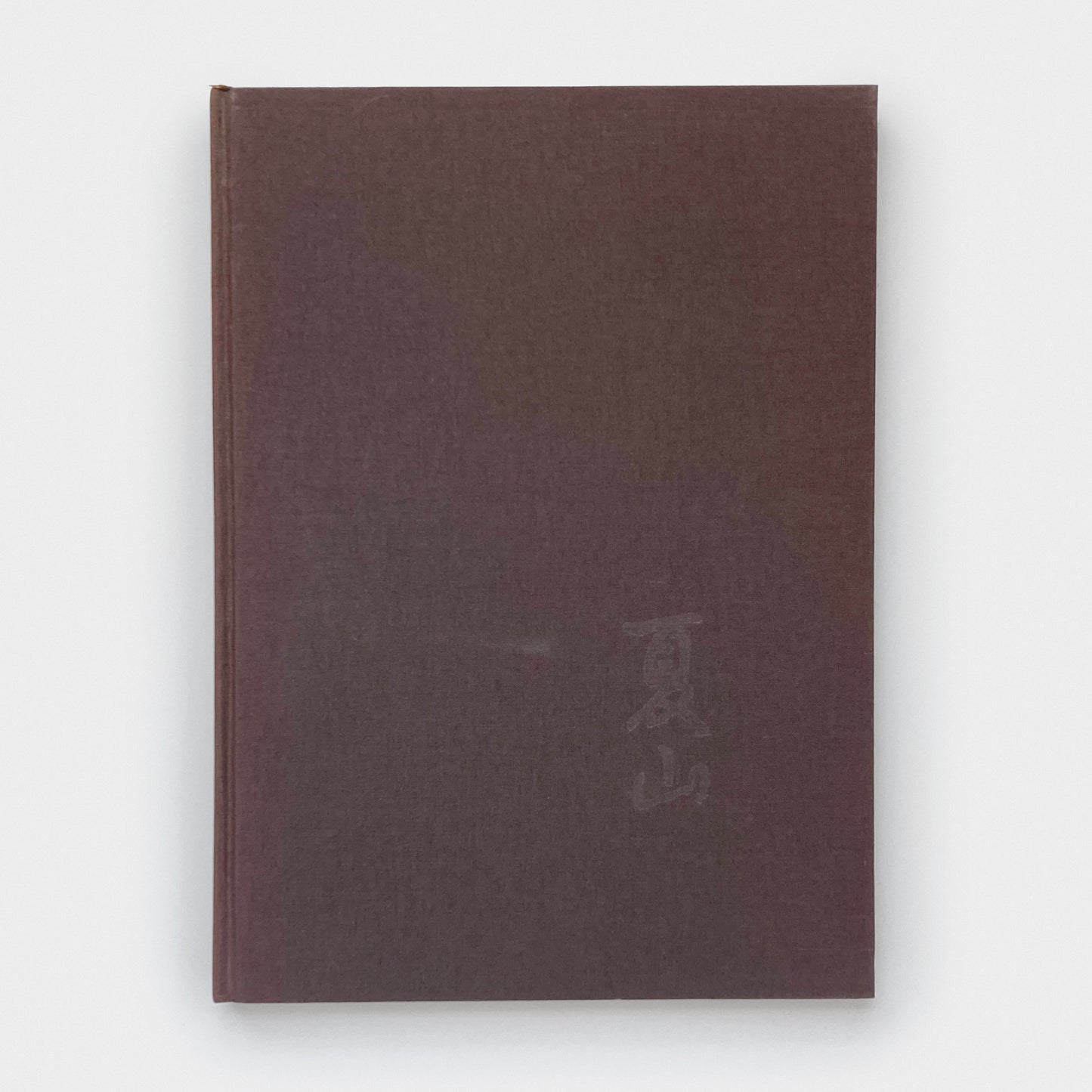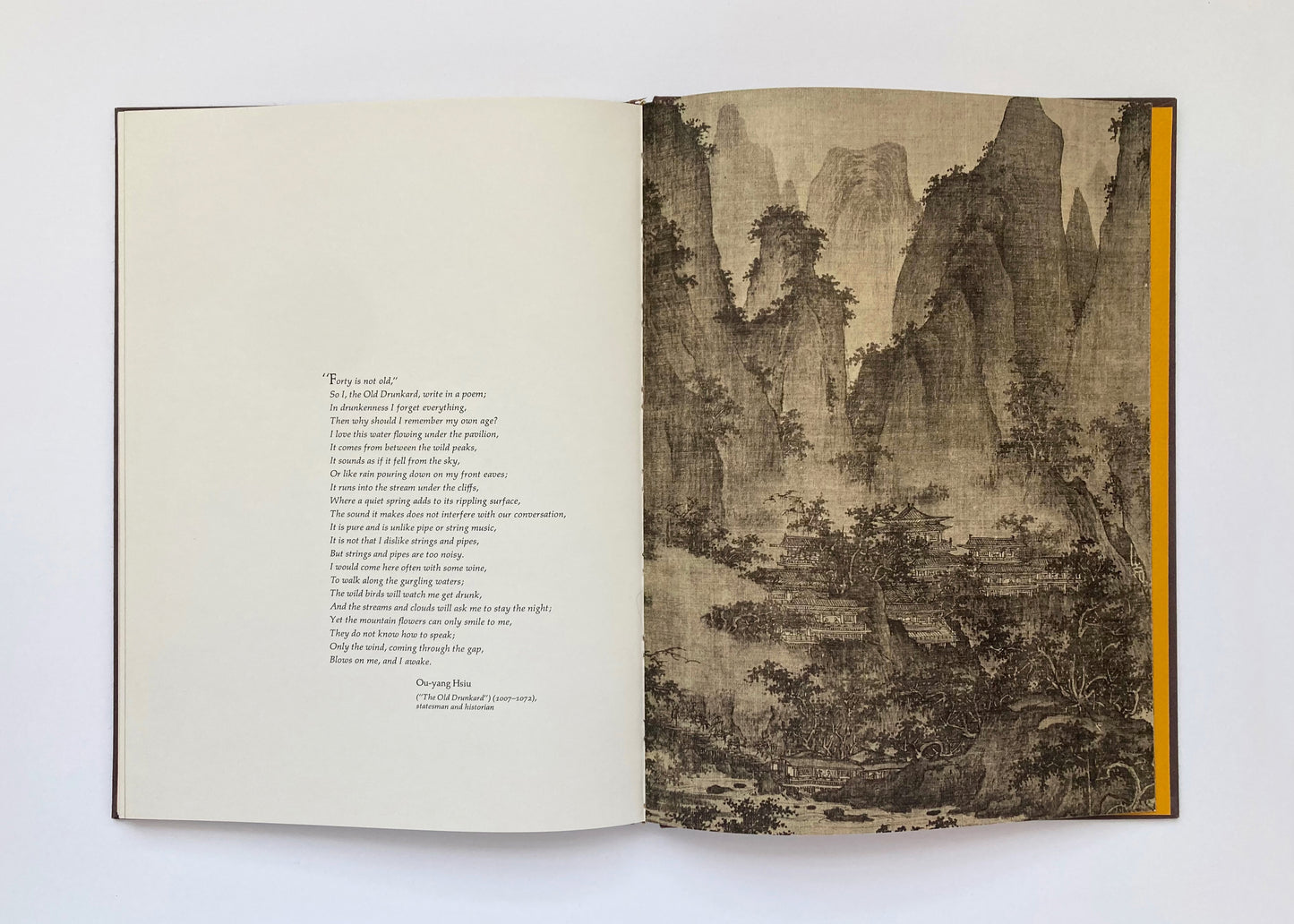Summer Mountains: The Timeless Landscape
Summer Mountains: The Timeless Landscape
Wen Fong
First Edition, 1975. 74 pages. Book measures 10.5 x 14 inches. Brown cloth with emboss to cover in printed paper-covered board slipcase. Near Fine in Near Fine slipcase.
Landscape has been the dominant subject in Chinese painting ever since it emerged as the pre-eminent art form of the Northern Sung period (960–1127). The acquisition by the Metropolitan Museum of a superb large Northern Sung handscroll, Summer Mountains, provides the opportunity to consider in some detail the landscape art of this period, together with its antecedents and later permutations.
Developing during the war-filled years of the tenth century, Northern Sung landscape painting produced timeless images that were followed and imitated for centuries. This art reached its apogee in the third quarter of the eleventh century. After the fall of the Northern Sung, it continued to be popular in the north, both under the Chin tartar and then the Mongol rule during the twelfth and thirteenth centuries. Meantime the painters of the Southern Sung (1127–1276), south of the Yangtze River, developed a simplified style that described the softer landscapes of the south.
There were three revivals of the Northern Sung grand manner in landscape painting, the first during the Yüan period (1277–1368), when the Mongols dominated the whole of China, the second in the fifteenth century, after the Ming overthrew the Mongols, the third at the turn of the eighteenth century, in the early Ch'ing (Manchu) period. Although landscape painting during the Yüan period and afterward was essentially different from that of the Northern Sung, it continued to evoke motifs and themes made popular by the Northern Sung masters.
Traditionally attributed to Yen Wen-kuei, a painter active about 980–1010, Summer Mountains, instead, as work in Yen's style, probably painted about 1050. But since Yen's style remained influential for centuries, an analysis of the Yen Wen-kuei tradition becomes a capsule account of the development of Chinese landscape painting between 1000 and 1700.
Numerous plates of examples of Sung Dynasty landscape paintings with text by Wen Fong make up the first half of this book. The second half is dedicated to the painting Summer Mountains, with full page reproductions of detail images accompanied by text from contemporary Sung poets and scholars Ou-yang Hsiu, Hsü Hsüan, Kuo Hsi, Mei Yao-ch'en, Lin Pu, and Chang Yen-yüan.
The Metropolitan Museum of Art
Couldn't load pickup availability
Ships within the United States. Please contact for international shipping.
View full details









